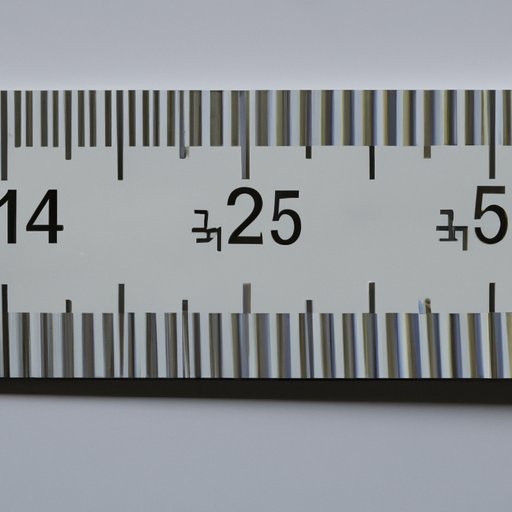Introduction
Have you ever been confused about whether a millimeter or a centimeter is bigger? If so, you’re not alone. These two units of measurement can easily be confused, causing errors in everything from woodworking to science projects. This article will explore the difference between millimeters and centimeters, and provide real-world applications, historical context, conversion guides, and even a science project to help you understand the distinction.
Infographic: Visualizing the Difference
Starting with an infographic that compares the sizes of a millimeter and a centimeter can help provide clarity. Simply put, a millimeter is smaller than a centimeter. One millimeter is equivalent to one-thousandth of a meter, while one centimeter is one-hundredth of a meter. To make this difference more tangible, imagine a credit card. The thickness of a standard credit card is about one millimeter. In contrast, a pencil’s diameter is roughly one centimeter. Visualizing these everyday objects can help readers grasp the distinction between the two units.
Real-World Applications
Understanding when to use millimeters versus centimeters can depend on the practical application. For instance, in carpentry, millimeters may be used when measuring the thickness and width of wood to ensure proper sizing for construction. In contrast, centimeters may be used in sewing to measure fabric and thread lengths. In engineering, the decision between millimeters or centimeters will depend on the specific part or component being measured.
Historical Context
Metric units of measurements were introduced in the late 18th century, during the French Revolution. The metric system aimed to create standardized measurements and simplify trade relations. The millimeter and centimeter were established as useful units of measurement because they are precise, small enough to measure everyday objects, and divisible by units of 10. A key distinction between metric units and imperial units, such as inches and feet, is that metric units are universally recognized based on the metric system and are used worldwide. In contrast, imperial units are still used in the United States as well as a few other countries, but are not universally recognized or standardized.
Conversion Guide
To convert millimeters to centimeters, divide the number of millimeters by 10. Likewise, to convert centimeters to millimeters, multiply the number of centimeters by 10. For example, if you have 65 millimeters, divide by 10 to get 6.5 centimeters. If you have 5 centimeters, multiply by 10 to get 50 millimeters. Remembering these conversion factors can make unit conversions quicker and easier.
Science Project: Measuring Objects
A simple science project can help students learn the difference between millimeters and centimeters. For example, have students measure various household objects with a ruler, noting whether they are measuring in millimeters or centimeters, and converting from one unit to the other if necessary. Possibilities for household objects to measure include book thickness, phone width, and picture frame length. The results can be graphed to show the differences between the two units of measurement, or used to compare between objects.
Conclusion
Understanding the difference between millimeters and centimeters can make a significant impact in measuring and construction. Whether you are a woodworker, engineer, or scientist, being well-versed in accurate measurements ensures success in your field. This article has provided essential information, including an infographic, real-world applications, historical context, conversion guides, and even a science project, to help readers differentiate between millimeters and centimeters. Putting this knowledge into practice can save time and errors in everyday situations, promoting confidence in your work.
